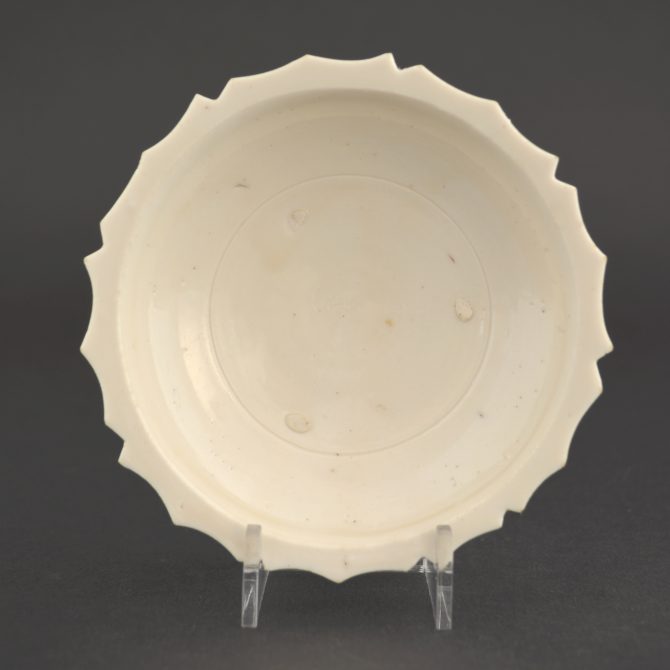
MING or QING c.1550 – 1700 Blanc de Chine
A Ming or Qing Blanc de Chine Barbed Rim Dish, Jiajing to Kangxi c.1550-1700. The Shallow Form with a Cut Barbed Rim, a Incised Line Around the Well and Three Spur Marks to the Center. The Base with a Shallow Footrim and Sanding to the Glaze.
SOLD
- Condition
- in perfect condition.
- Size
- 11 cm (4 1/4 inches)
- Provenance
- Hickory Museum of Art (acquisition number in red to the base 1983.12.10) Label to the base "Deaccessioned by the Hickory Art Museum June 3 1989".
- Stock number
- N/A
Information
This dish bares comparison with some of the earliest Blanc de Chine found in China. There are several sets of dated Blanc de Chine from Ming graves published but I can not be sure if this was was made sometime later, it might even date to the Kangxi period. Hence the very broad date given of c.1550 to 1700, However it is Likely to Date to c.1600-1650.
Blanc de Chine Porcelain :
The porcelain known in the West as Blanc de Chine was produced 300 miles south of the main Chinese kiln complex of Jingdezhen. The term refers to the fine grain white porcelain made at the kilns situated near Dehua in the coastal province of Fujian, these kilns also produced other types of porcelain. A rather freely painted blue and white ware, porcelain with brightly coloured `Swatow` type enamels as well as pieces with a brown iron-rich glaze. However it is the white blanc de Chine wares that have made these kilns famous. The quality and colour achieved by the Dehua potters was partly due to the local porcelain stone, it was unusually pure and was used without kaolin being added. This, combined with a low iron content and other chemical factors within the body as well as the glaze, enabled the potters to produce superb ivory-white porcelain.


